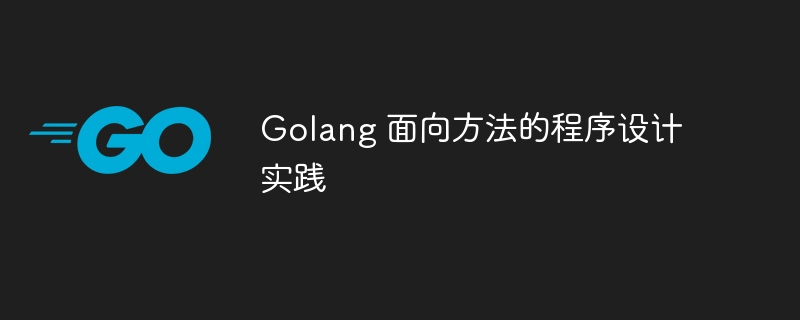Home >Backend Development >Golang >Practice method-oriented programming in Golang
Practice method-oriented programming in Golang
- WBOYWBOYWBOYWBOYWBOYWBOYWBOYWBOYWBOYWBOYWBOYWBOYWBOriginal
- 2024-02-26 15:15:18500browse

Golang method-oriented programming practice
In the Go language, a method is a function that acts on a specific type of variable. Through a method, you can create a Define specific behavior on a type or interface. Method-oriented programming is a programming paradigm that makes code more modular and maintainable by binding specific behaviors to data. This article will introduce how to practice method-oriented programming in Golang, and demonstrate its advantages and implementation methods through specific code examples.
1. Structure method
In Golang, structure is a user-defined data type that can be used to encapsulate multiple fields. By defining methods on a structure, we can encapsulate the operations and behavior of the structure. The following is a simple example:
package main
import "fmt"
type Rectangle struct {
width, height float64
}
func (r Rectangle) Area() float64 {
return r.width * r.height
}
func main() {
rect := Rectangle{width: 10, height: 5}
fmt.Println("Area of rectangle:", rect.Area())
}In the above example, we define a Rectangle structure and define an Area method on it, Used to calculate the area of a rectangle. By defining methods on the structure, we can understand the behavior of the structure more intuitively and make the code more readable.
2. Interface methods
Interface is a very important type in Golang, which defines a set of methods. By implementing the methods in the interface, the same behavior can be achieved between different types, achieving code reuse and scalability. The following is an example of an interface method:
package main
import "fmt"
type Shape interface {
Area() float64
}
type Rectangle struct {
width, height float64
}
func (r Rectangle) Area() float64 {
return r.width * r.height
}
func CalculateArea(s Shape) {
fmt.Println("Area:", s.Area())
}
func main() {
rect := Rectangle{width: 10, height: 5}
CalculateArea(rect)
} In the above example, we define a Shape interface, containing an Area method. The Rectangle structure that implements the Area method can be passed into the CalculateArea function to implement the function of calculating the area. Through interface methods, we can achieve unified processing between different types and improve the flexibility of the code.
3. Type methods
In addition to structures and interfaces, basic types can also define methods. Type methods allow you to add additional behavior to basic types, making your code more expressive. The following is an example of a basic type method:
package main
import (
"fmt"
"math"
)
type MyFloat float64
func (f MyFloat) Abs() float64 {
if f < 0 {
return float64(-f)
}
return float64(f)
}
func main() {
f := MyFloat(-10.5)
fmt.Println("Absolute value:", f.Abs())
} In the above example, we define a custom basic type MyFloat and define an Abs# for it ##Method for calculating its absolute value. Through type methods, we can add custom behaviors to basic types to improve code readability and flexibility.
The above is the detailed content of Practice method-oriented programming in Golang. For more information, please follow other related articles on the PHP Chinese website!

